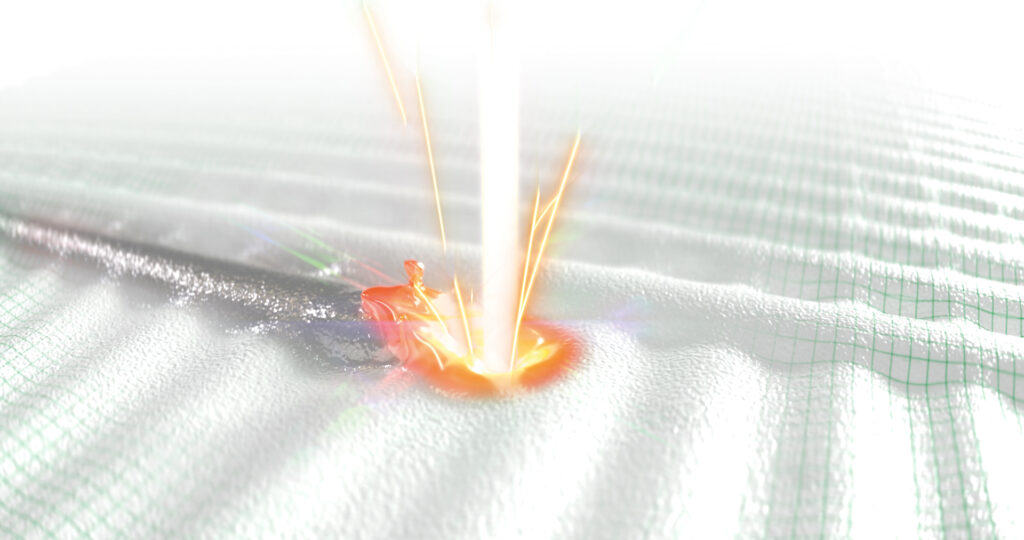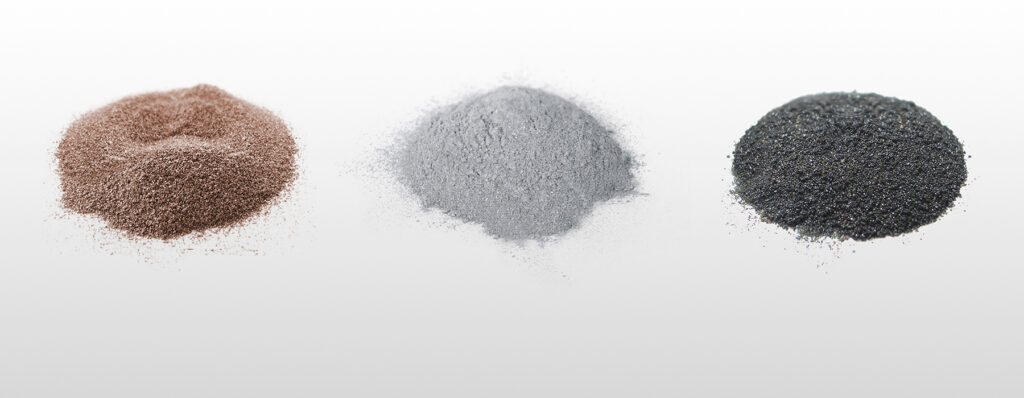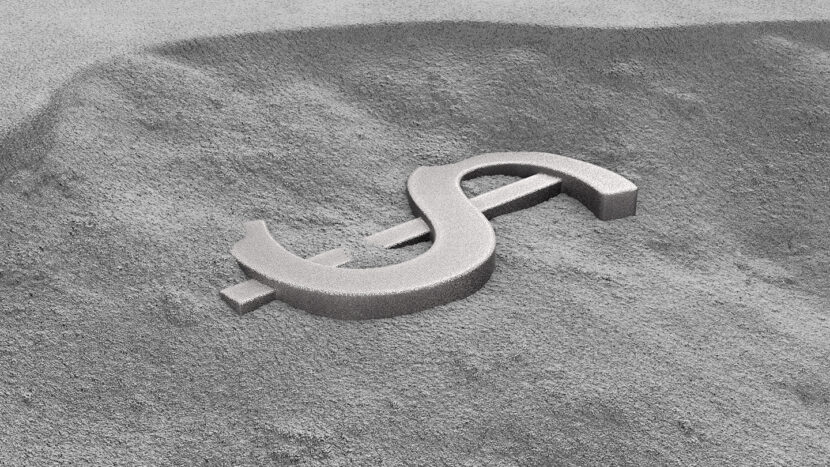Is your company one of the innovators already using 3D metal printing? By now, the growth for this technology is expected to increase by 26.4 percent each year for the next years until 2024.
The decision whether to invest in metallic additive manufacturing technology is important for any company in any industry. Thereby, you have to decide if this technology is suitable for your kind of components you manufacture. Besides this, there are the costs of 3D metal printing you must consider. So, the question rises “Does 3D metal printing make sense for our company compared to conventional technologies like formative or subtractive manufacturing?”.
This guide will show you the various costs of metallic additive manufacturing. It will enable you easier calculation whether the approach of this technology is suitable for your company.
Which costs do you have to consider for 3D metal printing?
As there are numerous variables involved, calculating the exact costs of metal 3D printing can be challenging. The variable with the probably highest impact on your costs is the type of additive manufacturing you choose. Essentially, here you have three types to consider for your choice:
- Direct Metal Laser Sintering (DMLS) or Selective Laser Melting (SLM)
When thinking of 3D metal printing, this is the most common technique people have in mind. These two techniques use similar methods: Metal powder is placed as a very thin layer on a build panel. A laser is used to selectively melt the placed layer whereas a solid structure forms. Then, a further layer of metal powder is placed and melting with the laser beam is repeated. This process is repeated, until the given structure is built up. These methods allow you to create highly complex geometries for your printed components.
- Binder jetting
Here, a layer of metal powder or metal granulate is spread over the build panel, that is fixed on a height-adjustable table. A binder is then deposited on specific points with a printer head, similar to an inkjet printer. Then the table is lowered for one layer thickness and the next layer of powder or granulate is spread over the top and the binding process is repeated. The whole process is repeated until the desired structure is built up. Then, the finished part is taken from the table and the surplus powder is released. After removal, the “green-part” must be treated in a further sintering process.
- Metal extrusion
This technique is principally used for prototypes. It is very similar to plastic 3D printing except that instead of liquid plastic, metal powder and binder are passed through the nozzle. This process then gradually builds up the desired structure. DMLS or SLM will be the 3D metal printing techniques of choice for most metal manufacturing operations.
In general, these printers are the most expensive ones. On the other hand, they provide the most practical approach for serious production. Therefore, in this guide we will focus on the costs of applying DMLS and SLM.

The costs of 3D metal printing
With the following information you are offered with a guide, that helps you investigating in 3D metal printing. Of course, the precise costs will vary from one company to another as well as from one print job to another. Further, the costs will differ depending on your output levels as well as the specific parts and machines you choose.
The 3D printer
DMLS and SLM machines are available in different sizes and with more or less advanced features. Basically, you will find 3D metal printers in three different ranges: Low end machines are at around $ 200,000, mid-range machines will cost you about $ 500,000. The most refined 3D metal printers can cost $ 1.5 million or more. Further, you must keep in mind installation and support when budgeting.
If you step in this technology, these costs may feel extremely high. A good possibility for your beginning may be outsourcing your 3D printing to a specialist 3D printing service provider. So, you can try and see if your idea is marketable. If your project is successful, you may then decide to buy your in-house 3D metal printer.
The software
Licences for 3D metal printing software can range at relatively high costs. Licence fees typically cost around $ 15,000 per user, per year. Furthermore, you will need a high-spec computer to run the software, which usually cost about $ 4,000 – $ 5,000.
Renting a cloud-based machine is an alternative to buying the software. Here, you pay for a remote desktop and the CAD software on a monthly subscription basis. As you further only pay for what you need, this model can cost you just $ 280 per month.
The material
For DMLS and SLM, your material to purchase is metal powder. Depending on your projects and printed parts you have to choose the optimal metal powder. Here is the cost range for the four most common metal powders:
- Aluminium – often only $ 5 per kilogram
- Nickel – estimated upwards of $ 50 per kilogram
- Steel – estimated $75 and up per kilogram
- Titanium – estimated $150 and above per kilogram
Notice: One major key benefit of metallic additive manufacturing is that waste is relatively low. About 90 % of the unused metal powder on a specific print job can be recycled.
Here, it is to say, that aluminium metal powder will be lower quality and is therefore not recommendable to use for high-quality components.

The post-processing
For post-processing the printed part, there are several costs to keep in mind when 3D metal printing. For each of these processes you will have to deploy labour time and special equipment:
- Part separation
Depending on the complexity of your part design, part separation can take from an hour up to one or two days. Therefore, this constitutes a mainly fixed labour cost.
- Surface finishing
Also, the costs of tooling and machining during the surface finishing depend on the complexity of your part. This can take from a couple of hours up to a couple of days’ labour.
- Heat, pressure, or chemical treatment
For hardening the component, various treatments may be required. It is very difficult to put an exact figure on these costs. But, as a rule of thumb, this can add as much as 10 % to your overall costs.
The energy usage
A further important and possible cost-intensive factor is the energy usage of your 3D metal printer. First, to run your machine you need a high voltage supply for it. The power ranges from around 3 kW for smaller metal printers up to around 10 kW for larger ones. The precise cost for your current energy usage is difficult to predict as it depends on your individual use cases and parts.
The staff
Employing staff, who have the competence to create 3D designs appropriate for 3D metal printing is a further significant cost. Here, you have to consider an average salary for professionals in this sector at about $ 62,000 per year
A further aspect, that you may have to keep in mind is to retain your staff, if your business has traditionally specialized on formative or subtractive production.
Notice: Costs for basic 3D metal printing courses range from $ 300 to $ 1,000 per employee.
Forecast of what 3D metal printing will cost you
The costs of your 3D metal printed parts can differ significantly, depending on your demands and specifications. The following paragraphs show you an estimation for your first year of 3D metal printing. These will help you to roughly budget, depending on your firm’s planning.
- Low cost – $ 100,000 in the first year
In this model, you outsource 3D printing to a service provider and use subscription-based software. You further choose lower cost materials and do a more limited number of manufacturing runs. Your aim is to explore if the technology of 3D metal printing is suitable for your company.
- Medium cost – $ 500,000 in the first year
Here in the medium cost model, you buy your own “standard” 3D printer to use in-house in your firm. Still, you outsource some of your activities and costs by renting software for 3D printing.
- High cost – $ 2 million in the first year
In the high-cost model, you decide for a high-end 3D printer costing around $ 1 million. Next, you hire some CAD designers on a fulltime basis and purchase a few CAD computers as well as software licenses. For your print jobs you choose more expensive metal powders and run your 3D printer extensively, what further increases your energy usage. Further, you invest in trainings for several employees.
Do the benefits defend the costs for 3D metal printing?
The decision of how much you are willing to invest in metal 3D printing for your company, depends on your company’s strategy and budget. For the entry in metallic additive manufacturing, as a small metal workshop, the choice of the outsourcing model may be the right way for you, as it enables you to explore how the technology works for your firm. So, you can also test the market for your designs and parts. With purchasing your own 3D printer, as a bigger company, you will have more control and flexibility.
While the costs of 3D metal printing are relatively high, the potential profits are significant. The possibility of manufacturing highly specialised and complex components can open major new markets for your company. So, the initial investment may be more than lucrative.
Now, as we have provided you with information regarding the main cost factors, calculating whether to enter 3D metal printing or not is easier for you. Now, as we have provided you with information regarding the main cost factors, calculating whether to enter 3D metal printing or not is easier for you. Take your time, consider the pros and cons as well as the costs of 3D metal printing, and then you can make your decision.

